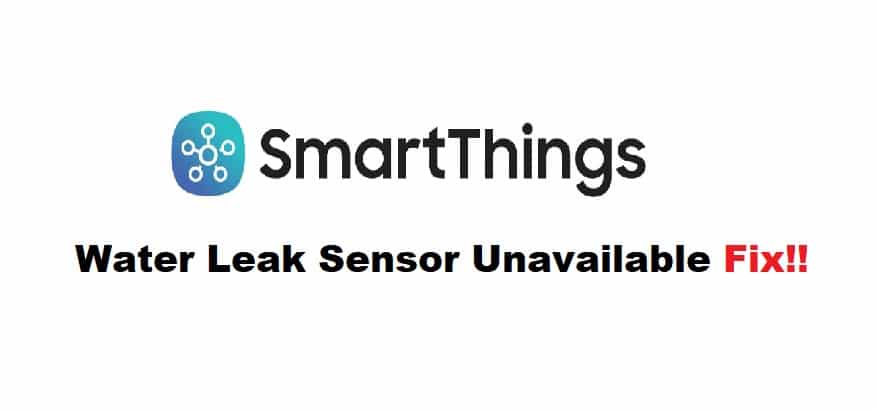
Managing your smart devices with the ZigBee network can often be complicated, and there are a ton of customers who complain about connectivity issues. Most of the time, these issues are just caused by a lack of repeaters, and you might just have to increase the signal strength by adding more repeaters.
A few customers also pointed out the same complications with the Samsung SmartThings Water Leak sensor being unavailable. If you’re running into similar issues and the water leak sensor is not available, just follow through with some of these methods. Hopefully, you’ll be able to narrow down the issue and fix it accordingly.
Samsung SmartThings Water Leak Sensor Unavailable
- Check Range
The first thing that you need to do is to check the range of the ZigBee network. Sometimes, the water leak sensor is simply out of range, and there is no response from the device. So, there is a good chance that you’re running into a similar situation with the Samsung SmartThings water leak sensor.
All you have to do in this situation is to find a better spot for the water leak sensor and bring it closer to the Connect Home system. That should be enough to improve the signal strength, and you’ll notice quick responses from the sensors. However, if you can’t move the water leak sensors, then you need to find some more repeaters for your smart system.
- Inspect Sensor For Water Damage
Sometimes, water damage to the smart sensor will lead to the same situation. While this unit is pretty durable and can hold up against water damage pretty well, the device won’t last if any water goes inside the unit. So, you need to open up the device and check for visible color differences that can help narrow down water damage.
If the unit is indeed damaged, then you can get a replacement from the dealer if the warranty is still valid. However, if you’re not in possession of a valid warranty, then going with a replacement might be your only move.
- Get New Batteries
At this point, there is a decent possibility that your batteries are just drained out. If you’re sure that there is no water damage, then the batteries in your sensor might just have run out. The only thing you can do to fix this situation is to get battery replacements from the official store and install them on your water leak sensor. Make sure that you’re buying compatible batteries to avoid any excessive issues with the water sensors not working.
- Re-add Sensor
Re-adding sensors is also not a bad decision when it comes to fixing these issues with the water leak sensor being unavailable. So, if there is no response even after changing the batteries, then you need to remove the water leak sensor from the Smart System and then add the sensor again. This will address minor connectivity bugs, and you’ll be able to secure the desired response from the smart device in no time.
- Factory Reset Sensor
Resetting the sensor to factory settings will wipe all the stored configurations, and you’ll have to set up the unit from scratch. However, this is the best method when it comes to dealing with software-related issues.
So, you need to get the unit reset to factory settings and then connect it with the smart system one more time. Make sure that the sensor is within the range of your network, and then test out the availability of this device. Hopefully, you won’t have to bother with more issues.
- Call Samsung Support
In case of hardware issues or genuine defects in the device, you need help from the official Samsung support. They will make it much easier to put the finger on the exact issue. So, if you’re not sure about why your unit might be unresponsive, just call the official support members.
After helping you find the issue with the water leak sensor, they will help you through possible fixes. If the unit is indeed defective, then you can demand a replacement by claiming the warranty. Hopefully, you’ll have a new device within a few days. So, make sure to reach out to the professionals and have them help you with this issue.